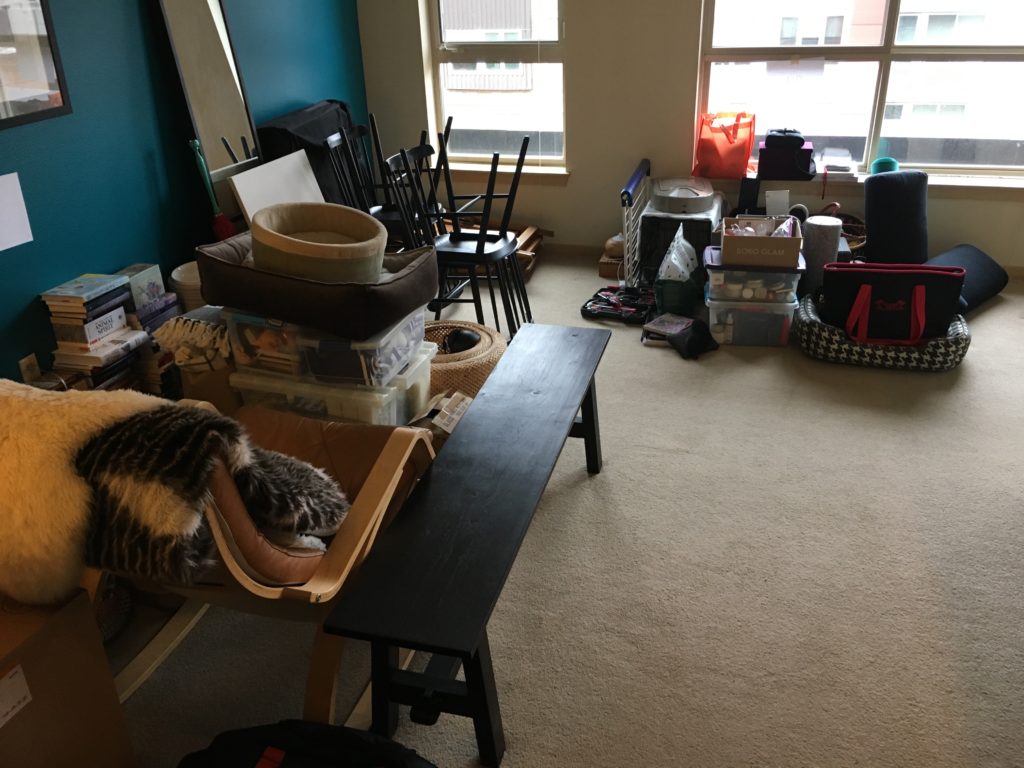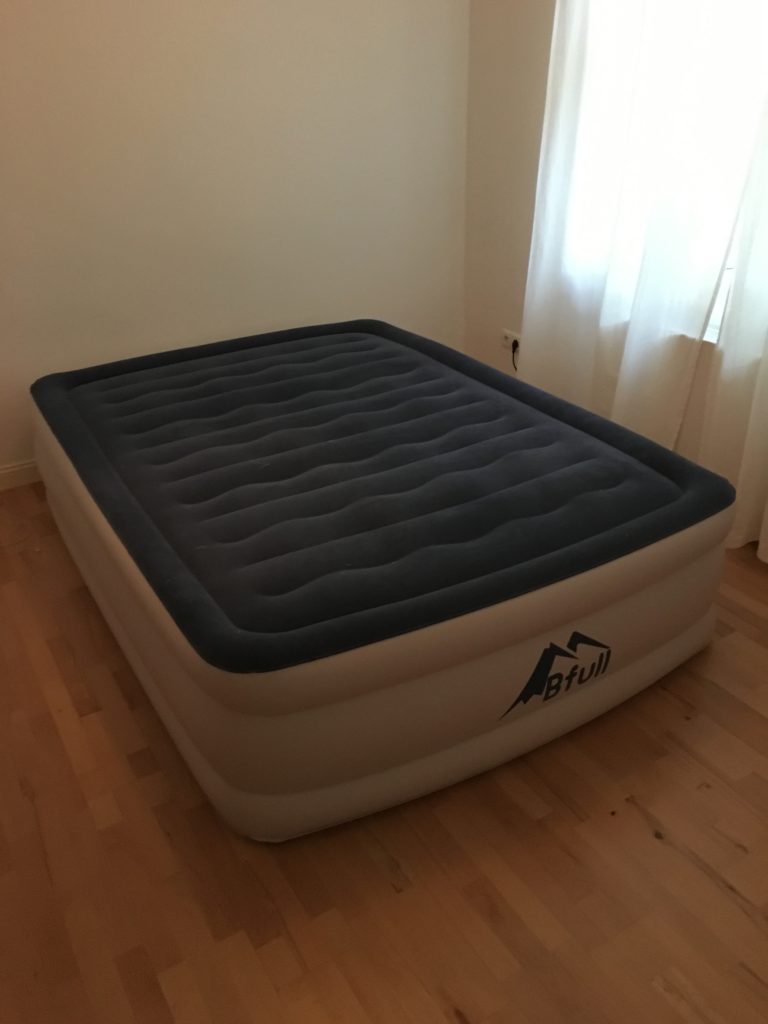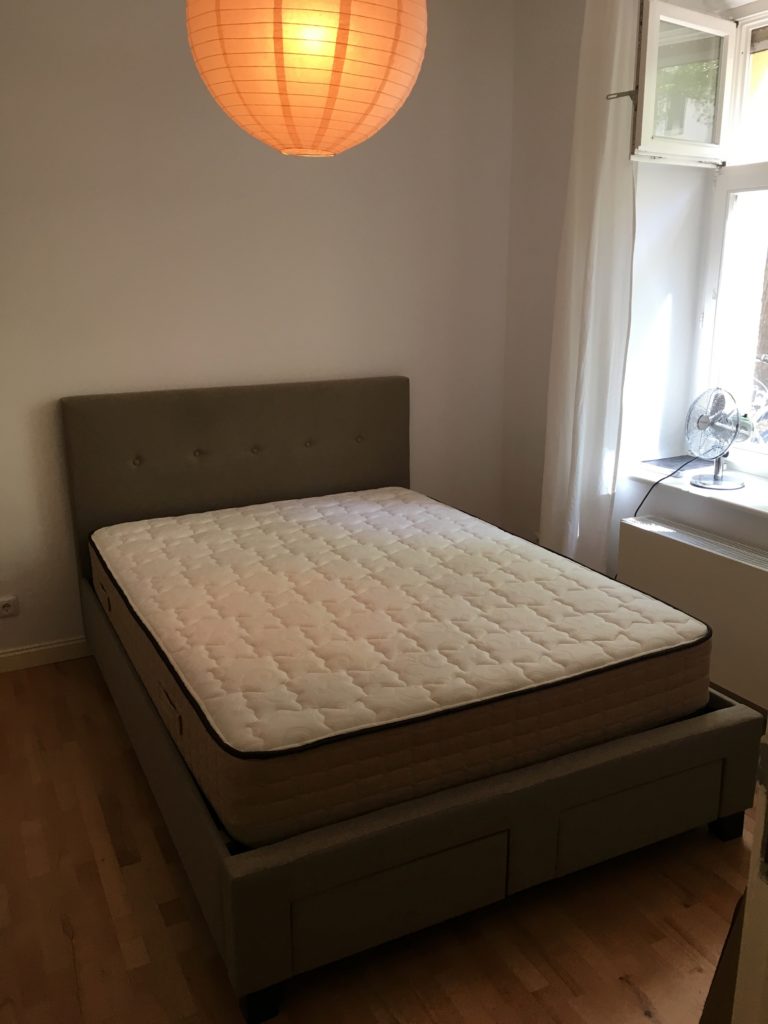I’ve moved about a dozen times in my life. Most of those moves were from one apartment to another in the same city, a few were across cities, and one was across the United States. I figured I had the moving thing down reasonably well.
Then we started on our move to Germany, and I learned what a real move is like, which I’m sharing here. This won’t be a comprehensive guide (there are plenty of those), but rather a few of our specific experiences and learnings from the start of our trek across the world.
Getting started
After I accepted an offer with Amazon Berlin, my next choice was what sort of relocation package I would take. Basically, I could take a lump sum and handle the move myself, or take a smaller payment and get more relocation support. Since I’d never done anything like this before, it was an easy choice: less money, but more help.
Choosing the supported move made everything significantly easier. The relocation company (Graebel) helped organize the moving companies in Seattle (Ace Relocation) and Berlin. They also arranged all the transport, necessary paperwork for customs, and provided guidance on what is allowed in international shipments. While I probably could have figured everything on my own, it would have taken longer and caused many gray hairs.
Prepping for moving
With a move date and the initial logistics set, we then had to actually get everything ready for the big move. To ensure we had plenty of time to get everything done (and there was a lot), we started our preparations several months before our move date.
With our relocation, we were allotted two shipments: one by air, and one by sea. The air shipment takes about a month to arrive, but is small (about the size of two washing machines). The sea shipment is a full shipping crate (like you see on trailer trucks), but takes nearly two months. We also had our suitcases and whatever we could carry on our flight from Seattle to Berlin. With this in mind, we set about deciding what to take, and selling or giving away everything else (this was a project on its own, befitted its own post).
Since there’s ample information on moving, and each move is unique, I’ll just share four small tips, and one big recommendation, from our move.
Here are the small ones:
- Start early: It is tough to know how things will sell. Some will take awhile, some will go really quick. You don’t want to be doing a fire-sale in your last few days. This will be stressful and you’ll be forced to sell for less than you’d prefer. At the same time, think about the things you’ll really want toward the very end. We kept a few chairs and our table up to the final week since we didn’t want to spend weeks eating dinner on the floor.
- Know what cannot be shipped: There are a variety of items our shipping company won’t take. Some of these are obvious, such as explosives or live animals. Others less so and more annoying. For example, they wouldn’t take most oils, which ruled out lots of beauty products. Also, no food products, so we weren’t able to do the big Costco run we planned or ship a ton of our dog’s specialty food.
- Don’t take appliances: If you’re moving from the US to Europe, there’s a decent chance your appliances won’t work with the different voltage. You can get plug adapters (and we bought a bunch) for lights and dual-voltage electronics, but if the appliance draws a lot of power, you’ll need a converter. These are big, ugly, and expensive. Instead, we gave our appliances to family in case we want them when (or if) we return.
- In the last few days, give friends your food: Because we lived in Seattle, we were required to buy an assortment of fancy, boutique, and bourgeoisie food products. Throwing away any food is a waste, but throwing away this stuff would have been a travesty. Thankfully, we had several friends pop-by in our last few days to say goodbye. What they didn’t expect was that they’d leave with half of a specialty grocery store in their car. So thank you Jen, Kate, and Lauren for keeping quality food out of the trash bin.
And, lastly, here’s the really big recommendation:
Spend quality time deciding what you want in each stage of your move and pack your luggage, air shipment, and sea shipment accordingly.

While in Seattle, we created three groups of stuff: for our luggage, air shipment, and sea shipment. These roughly sync with each phase of the move: luggage for the corporate hotel in the first month, the air shipment for the first month in our apartment, and then the final sea shipment with everything else. Unfortunately, in the rush, we didn’t think enough about what we’d need for each phase of our move.
Here are a few examples of what I wished I’d done:
- Taking pet accessories in our luggage: There were several things we sorely missed while in our long-term corporate hotel, namely pet food and kitty litter (since we arrived on a holiday weekend when nearly every store was closed), my cat’s automatic feeder (which prevents her from waking us up at the first light of dawn), and external phone batteries (because we were constantly killing our phone batteries while out and about). I would have gladly traded some of the clothes we brought for these items.
- Packing some kitchen contents in our air shipment: We expected to take most of our kitchen contents in our air shipment. Unfortunately, we significantly over-estimated what would fit in air cargo and only learned our error during the hectic move-day. So, in haste (and error), we elected to take mostly clothes in the air crate and put all the kitchen contents in the sea shipment. Because of this, we had more than enough clothes, but had to buy a small, cheap set of plates, utensils, and one pot from Ikea while we waited for our sea shipment. The result? Nearly a month of pasta since that was about all we could make with one pot.
- Not taking our bed? When we first moved to Seattle, we purchased a very nice mattress (one of my best purchases ever). Naturally, we figured we’d then bring this to Berlin. Unfortunately, this meant that we were sleeping on an air mattress for nearly a month while we waited for our bed to slowly traverse the United States, the Atlantic Ocean, and German customs. When we finally received our bed, I was truly thankful to have it. At the same time? I wonder if I should have sold it in Seattle and gotten a new bed in Berlin on day one.

Four weeks on an air mattress? Not recommended. 
Finally, an actual bed. Worth the wait? Maybe.
Naturally, many of these learnings were unique to our situation. However, if we’d sat down and written down the things we might want for each portion of our transition, I think we would have been a lot more comfortable through each phase.
Want to follow along with our Berlin adventure? Subscribe!